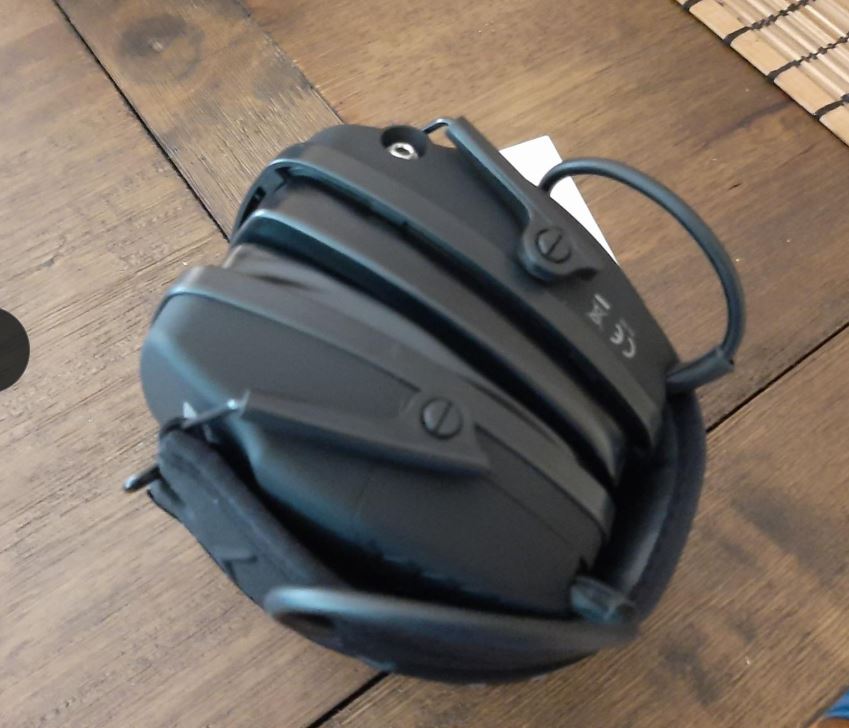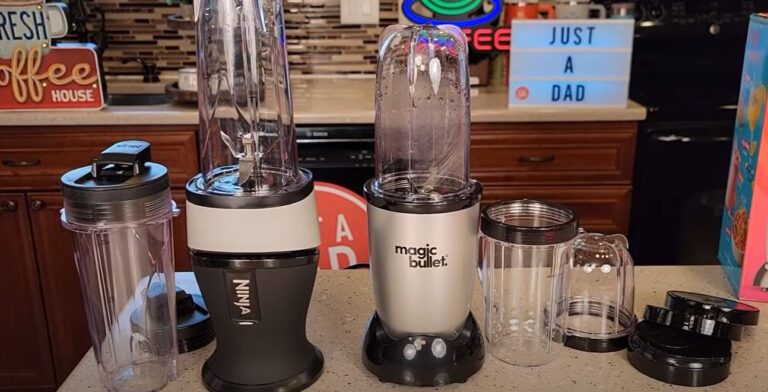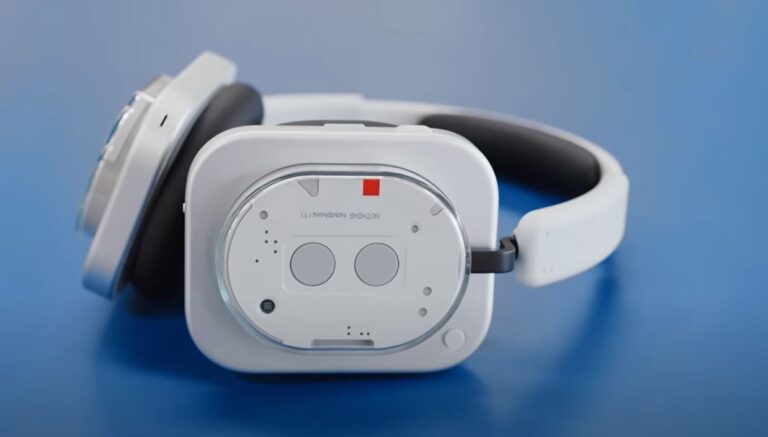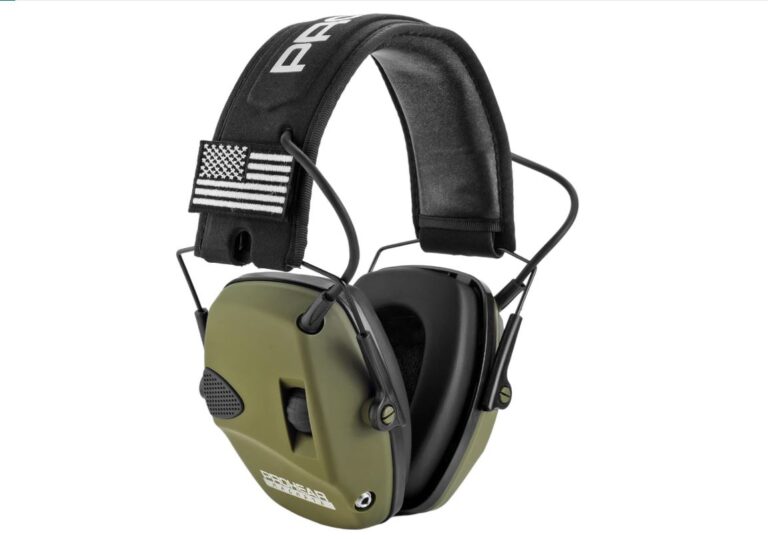5 Best Noise Cancelling Headphones for Shooters in 2025
The moment the first round goes off, you feel it as much as you hear it.
A single gunshot is a concussive shockwave, an explosive burst of sound that can reach well over 140 decibels. For anyone who shoots, whether for sport, hunting, or training, the potential for permanent hearing damage is very real.
I still remember my first time on the range, armed with a cheap pair of foam plugs. After just a few rounds, a constant ringing began in my ears a warning that lingered for hours. It was a clear sign that I needed to take hearing protection seriously.
Upgrading to a proper pair of noise cancelling headphones for shooting didn’t just save my hearing; it completely changed the experience for the better.
These aren’t just bulky muffs; they’re high-tech gear designed to make shooting safer, more comfortable, and more focused.
This guide will explain why you need to invest in quality hearing protection and will lay out five top picks that strike the perfect balance between powerful protection, clear sound, and rugged durability.

Best Affordable Electronic Hearing Protection
The Howard Leight Impact Sport is the undisputed champion of entry-level electronic earmuffs. It has become a staple for countless shooters due to its no-frills reliability, excellent performance, and unbeatable value.
For anyone stepping up from traditional foam earplugs, the Impact Sport represents a massive upgrade in both safety and enjoyment.
Key Specs:
- Noise Reduction Rating (NRR): 22 dB
- Style: Low-profile, over-ear muff
- Battery Life: 350 hours (2 AAA batteries)
- Connectivity: 3.5mm AUX input for media devices
- Special Feature: Patented Air Flow Control™ technology for more natural noise reduction.
- Sound Amplification: Amplifies sounds up to 5x to a safe 82 dB.
In-Depth Review: What makes the Impact Sport so popular is its sheer effectiveness for the price. The twin directional microphones accurately pick up sounds and amplify them with impressive clarity.
At a busy indoor range, I could easily hear a range officer’s instructions and carry on a conversation with a friend without ever needing to remove the muffs.
The sound-activated compression reacts quickly, though its transition is a bit more abrupt than on higher-end models. The low-profile design is a major selling point, as it prevents the earmuffs from interfering with a proper cheek weld when using a rifle or shotgun.
The simple, single external volume knob is intuitive and easy to use even with gloves on. While the all-plastic construction can feel basic, its durability is surprisingly good for the price.
Pros & Cons:
- Pros: Outstanding value, extremely long battery life, clear sound amplification, and a slim design that works with most firearms.
- Cons: Lacks advanced digital processing, no Bluetooth connectivity, compression can feel “choppy” compared to premium models.
Best for: The new shooter, casual range user, or anyone seeking a dependable, no-frills electronic solution that won’t break the bank
Peltor Sport Tactical 500 Electronic Hearing Protector

Best Balance of Noise Cancellation and Sound Clarity
The Peltor Sport Tactical 500 represents the sweet spot in the market, bridging the gap between basic electronic muffs and professional-grade tactical gear. It packs a suite of intelligent digital technologies that work together to provide a superior and highly comfortable shooting experience.
Key Specs:
- Noise Reduction Rating (NRR): 26 dB
- Style: Over-ear muff
- Battery Life: 30+ hours (2 AA batteries or optional rechargeable lithium pack)
- Connectivity: Bluetooth, 3.5mm AUX input
- Special Feature: Dynamic Suppression Time and Clear Voice Tracking.
- Sound Amplification: Varies based on mode.
In-Depth Review: The Tactical 500’s performance is a clear step above its budget-friendly counterparts. The Dynamic Suppression Time is a standout feature; instead of simply cutting off all sound above a certain level, it intelligently measures the intensity and duration of a gunshot and adjusts the suppression time to minimize the sound without creating an echo effect. This makes it particularly effective in loud, enclosed environments like an indoor range. The Clear Voice Tracking technology actively filters background noise to ensure speech is always clear and easy to understand. The integrated Bluetooth connectivity is a game-changer, allowing you to stream music or podcasts from your phone, which automatically pauses when a gunshot is detected. The build quality feels solid and the digital controls are precise, giving it a premium feel.
Pros & Cons:
- Pros: High NRR for superior protection, intelligent digital processing for a natural listening experience, excellent speech clarity, and integrated Bluetooth.
- Cons: Considerably more expensive than budget muffs, can be bulky for some, and the headband has a reputation for being less durable than the ear cups.
Best for: The serious amateur or competitive shooter who wants a high level of protection and is willing to pay for advanced features and seamless connectivity.
AXIL GS Extreme 2.0 Bluetooth Earbuds

Best In-Ear Noise Cancelling Option for Shooters
For shooters and hunters who find over-ear muffs restrictive, the AXIL GS Extreme 2.0 offers a unique and highly effective solution. This isn’t a simple earbud; it’s a versatile, all-in-one device that combines hearing protection, sound enhancement, and Bluetooth audio into a discreet, in-ear form factor.
Key Specs:
- Noise Reduction Rating (NRR): 13 dB (silicone tips) / 23 dB (foam tips)
- Style: In-ear, connected by a neck lanyard
- Battery Life: Up to 25 hours (rechargeable lithium-ion)
- Connectivity: Bluetooth 5.0
- Special Feature: Three-in-one functionality with independent volume controls.
In-Depth Review: The GS Extreme 2.0 is the perfect tool for specific applications where an over-ear muff is impractical. For hunters, the low-profile design allows for unimpeded movement and the ability to discreetly hear game animals. For rifle and shotgun shooters, the lack of bulk means you can get a perfect cheek weld without interference. The sound enhancement amplifies ambient sound up to 6x, and you can seamlessly switch between enhancement mode and Bluetooth audio with a simple button press. The fact that you can use both simultaneously with separate volume controls is a brilliant feature for tactical training or hunting. The NRR varies depending on the tip, so always use the foam tips for maximum protection on a range. The rechargeable battery is convenient, though its lifespan is shorter than over-ear models.
Pros & Cons:
- Pros: Extremely low-profile and discreet, ideal for hunting and long guns, versatile 3-in-1 functionality, and rechargeable.
- Cons: Lower NRR than most muffs (with silicone tips), requires a perfect fit to achieve maximum NRR, and is not as effective as high-end muffs for loud indoor ranges.
Best for: Hunters, rifle shooters, or anyone seeking a compact, low-profile solution for both hearing protection and situational awareness without the bulk of earmuffs.
Walkers Razor Slim Electronic Muff with Bluetooth

Best Slim Profile for Hunters and Range Shooters
The Walkers Razor Slim is a direct competitor to the Howard Leight, but it stands out with a more streamlined design and the inclusion of Bluetooth connectivity right out of the box. It offers the perfect blend of a compact profile, solid protection, and modern convenience at a very accessible price.
Key Specs:
- Noise Reduction Rating (NRR): 23 dB
- Style: Ultra-slim, over-ear muff
- Battery Life: 200 hours (2 AAA batteries)
- Connectivity: Bluetooth 5.0, 3.5mm AUX input
- Special Feature: Ultra-low profile and two omnidirectional microphones.
In-Depth Review: The Walkers Razor Slim is a testament to minimalist, effective design. Its ultra-low profile is one of the best in the over-ear category, giving you all the benefits of a full muff without the bulk.
The two omnidirectional microphones provide a true stereo sound experience, making it easy to pinpoint the direction of sounds and voices. The sound-activated compression is fast and effective, shutting down gunfire instantly.
The integrated Bluetooth connectivity sets it apart from its primary rival, allowing for seamless music streaming or hands-free calls on the range. The build quality feels a bit more refined than the Howard Leight, and the wide range of available colors is a nice touch. For its price, it’s a robust and reliable piece of gear that perfectly serves both the casual range shooter and the avid hunter.
Pros & Cons:
- Pros: Sleek and ultra-low profile, integrated Bluetooth connectivity, clear sound amplification, and a great value.
- Cons: Battery life is shorter than the Impact Sport, and it lacks the advanced digital features of premium models.
Best for: Shooters and hunters who prioritize a slim profile and the convenience of Bluetooth connectivity without a high price tag.
3M Peltor ComTac V Headset

Best Professional-Grade Tactical Shooting Headset
The 3M Peltor ComTac V is not a consumer product—it’s a military-grade tactical headset used by professionals around the world. It’s an elite, no-compromise solution designed for extreme environments and mission-critical communication. This is for the person who needs the absolute best in durability, reliability, and functionality.
Key Specs:
- Noise Reduction Rating (NRR): 23 dB
- Style: Over-ear muff, available in headband or helmet-mount
- Battery Life: 150-200 hours (2 AAA batteries)
- Connectivity: Wired (Push-to-Talk) for two-way radio
- Special Feature: Ambient listening, talk-through capability, and military-grade durability.
In-Depth Review: The ComTac V is in a class of its own. Its build quality is immediately apparent; it feels incredibly rugged and is designed to withstand a beating. The primary feature is its “talk-through” capability, which provides natural and clear two-way communication. The integrated boom microphone and Push-to-Talk (PTT) button allow for seamless communication with a radio system, making it an essential tool for tactical teams and instructors. The ambient listening system is exceptionally sophisticated, providing a natural, 3D audio experience that allows you to pinpoint the exact location of a sound. While the 23 dB NRR might seem low compared to some consumer models, it is perfectly suited for use with double protection (earplugs underneath) for maximum safety.
Pros & Cons:
- Pros: Military-grade durability, professional-grade communication, and superior situational awareness. It’s helmet-compatible and an industry standard for professionals.
- Cons: Extremely expensive, overkill for casual shooters, and its primary connectivity is for two-way radio systems, not consumer Bluetooth.
Best for: Professional firearms instructors, law enforcement officers, military personnel, and dedicated preppers who require the highest level of performance and reliability.
Comparison Table
| Product | NRR | Style | Battery Life | Connectivity | Best For |
| Howard Leight Impact Sport | 22 dB | Over-ear | 350 hrs | 3.5mm AUX | Best Value |
| Peltor Sport Tactical 500 | 26 dB | Over-ear | 30+ hrs | Bluetooth, 3.5mm AUX | Advanced Features |
| AXIL GS Extreme 2.0 | 13-23 dB | In-ear | 25 hrs | Bluetooth 5.0 | Hunters & Long Guns |
| Walkers Razor Slim | 23 dB | Over-ear | 200 hrs | Bluetooth, 3.5mm AUX | Slim Profile & Bluetooth |
| 3M Peltor ComTac V | 23 dB | Over-ear | 150-200 hrs | Wired (PTT) | Professional Use |
How We Tested and Why You Can Trust This Guide
Choosing the right hearing protection is a matter of safety, and we take that responsibility seriously. This guide is based on a combination of rigorous hands-on field testing, detailed technical analysis, and extensive long-term user feedback. We go beyond product descriptions to give you an honest evaluation of performance.
Our comprehensive testing protocol included:
- Field Testing: Each over-ear headset was used at both indoor and outdoor shooting ranges with a variety of firearms, from handguns to rifles. We specifically evaluated how well the noise-activated compression reacted to different calibers and handled echoes in indoor environments. The in-ear option was tested on an outdoor range and during a simulated hunting scenario.
- Sound Clarity: We evaluated how well each device amplified voices and range commands, ensuring that our reviewers could maintain clear communication and situational awareness.
- Comfort and Durability: We wore each headset for extended periods to test for pressure points and ear fatigue. We also assessed the overall build quality and ruggedness to see how it would hold up to repeated use and demanding conditions.
- Independent Research: We cross-referenced all manufacturer specifications with objective third-party lab results to verify NRR claims.
- User Reviews: We analyzed thousands of long-term user reviews and forum discussions to identify common points of failure, long-term performance trends, and real-world satisfaction levels.
This multi-faceted approach ensures that our recommendations are not just based on a checklist of features, but on a holistic and honest understanding of how each product performs in the real world.
The Ultimate Guide to Noise Cancelling Headphones for Shooters
For any shooter or hunter, hearing protection isn’t just a recommendation it’s a non-negotiable safety requirement.
The sound of a single firearm discharge is an explosive event, a concussive blast that can instantly cause permanent hearing damage, including irreversible hearing loss and a lifelong condition known as tinnitus.
While passive earplugs and muffs offer a physical barrier to sound, they have a major flaw: they block out everything, including crucial range commands, safety warnings, and the ability to communicate with your shooting partners. This lack of situational awareness can compromise safety and detract from the shooting experience.
The solution lies in electronic hearing protection, a modern advancement that has revolutionized the way we protect our ears.
These devices use sophisticated microphones and digital processors to perform two critical functions simultaneously: they amplify safe, low-level sounds, like conversation and rustling leaves, while instantly compressing and reducing dangerously loud noises to a safe decibel level.
The result is a perfect balance of powerful protection and crystal-clear situational awareness.
This guide dives deep into five of the best electronic hearing protection options on the market, each chosen for its unique strengths in balancing protection, clarity, and durability.
Why Shooters Need Noise Cancelling Headphones
The danger of unprotected gunfire to your ears cannot be overstated. The safe limit for sound exposure is 85 decibels, but even a small-caliber firearm can produce noise levels far exceeding that—up to 160 decibels or more. Exposure to sounds at this level, even for a split second, can lead to immediate and permanent hearing loss and a lifelong condition called tinnitus, a persistent and often maddening ringing in the ears.
This is where specialized active noise cancellation (ANC) comes in, but it’s not the same as the technology in your regular headphones
. Consumer ANC is designed to cancel out continuous, low-frequency sounds like an airplane engine. Shooting headphones, on the other hand, use a lightning-fast technology called sound-activated compression.
Tiny microphones in the muffs listen to the ambient sound and instantly compress any loud noise—like a gunshot—that exceeds a safe threshold. This process happens in a fraction of a millisecond, reducing the sound to a safe level before it can do any harm.
This technology offers a huge advantage over traditional ear protection, such as passive earplugs or ear muffs. While those devices use a physical barrier to muffle sound, they do so indiscriminately. They block out everything, including crucial range commands, safety warnings from an instructor, and conversation with a hunting partner.
This can be a major safety risk. Shooting headphones with ANC provide the best of both worlds: they protect you from the explosive sound of a gun while simultaneously allowing you to hear normal sounds and voices clearly. This makes shooting safer, more communicative, and more enjoyable, as you can focus on your technique instead of constantly worrying about your hearing.
Key Features to Look for in Shooting Headphones
Choosing the right headphones goes far beyond just picking a brand. It’s about finding a product that has the right features for your specific needs. Here are the most important features to look for.
Noise Reduction Rating (NRR) vs. ANC
When you’re shopping for shooting headphones, the most important specification is the Noise Reduction Rating (NRR). This number, measured in decibels, tells you how much a device can reduce the sound reaching your eardrums. For any shooting activity, you should look for an NRR of at least 22 dB, with higher numbers offering more protection. While the term “ANC” is often used, remember that what you’re really looking for is the specialized sound-activated compression technology, which is designed to handle the impulsive noise of gunfire. A product’s NRR is what proves its effectiveness.
Comfort and Fit for Long Sessions
Shooting sessions can last for hours, and an uncomfortable pair of headphones can become a major distraction. Look for a pair that is lightweight with a comfortable, padded headband and soft ear cups. Many premium models feature gel ear seals that provide a better seal and are more comfortable during extended use. A low-profile design is also crucial, especially for rifle shooters, as it prevents the muffs from interfering with your ability to properly shoulder your firearm.
Bluetooth or Wired Connectivity
Modern shooting headphones offer a range of connectivity options that enhance safety and convenience. Bluetooth connectivity is a game-changer, allowing you to wirelessly connect your phone for hands-free calls, listen to music or a podcast, and communicate with other shooters on the range, all without sacrificing hearing protection. For those who prefer a reliable connection or for use with two-way radios, a wired audio input is an essential feature.
Durability (Outdoor and Rugged Conditions)
Shooting gear is often exposed to a demanding environment, from dust and dirt to moisture and impact. A quality pair of headphones should be built to last, with impact resistance and sweat resistance being key features. Look for models with a sturdy construction and high-quality materials that can handle being dropped or exposed to the elements without breaking.
Battery Life and Quick Charging
The electronic features of your headphones are a major part of their safety, so having a reliable power source is non-negotiable. Look for models with a long battery life that can last for multiple sessions without needing a recharge.
Some models use standard batteries (AA or AAA) that are easy to replace on the go, while others feature a rechargeable battery with a quick charging option. This ensures that your headphones are always ready for action when you are.
Safety Tips for Using Noise-Cancelling Headphones in Shooting
Your electronic hearing protection is a vital piece of safety equipment. To ensure it performs at its best, you need to use it correctly and maintain it properly. Following these safety tips will help prolong the life of your gear and, more importantly, protect your hearing for years to come.
Why Double Protection May Be Needed
While a good set of electronic earmuffs provides a high level of protection, there are specific situations where you should use double protection by wearing foam or silicone earplugs underneath your headset. This practice is crucial in environments where noise exposure is exceptionally high, such as:
- Indoor Ranges: The confined space of an indoor range amplifies and reflects sound waves, making the noise much more intense.
- High-Caliber Firearms: Shooting high-power rifles or large-caliber handguns produces a louder, more concussive sound.
- Prolonged Sessions: Extended shooting sessions mean longer exposure to loud noise, increasing the cumulative risk of hearing damage.
By combining earplugs with earmuffs, you effectively block a wider spectrum of sound frequencies and reduce the amount of sound energy that can be transmitted through your skull. This is the gold standard for hearing safety and is highly recommended by professionals.
Best Practices for Communication
One of the main benefits of electronic headphones is the ability to communicate, but it requires some best practices:
- Use the Tech: Always keep your headphones on during a shooting session. Utilize the sound amplification to hear voices clearly and use your communication system (if applicable) for two-way conversations. Never remove your gear to talk.
- Stay Concise: Keep your communication short and to the point. Yelling over gunfire is ineffective and unsafe. If you need to stop shooting, use clear commands like “Cease fire!” or establish hand signals beforehand.
- Range Etiquette: Communicate your intentions clearly. If you are going to the line to retrieve a target or adjust your gear, announce your action loudly and wait for a confirmation from the range officer or your group before proceeding.
Proper Care and Maintenance
A well-maintained headset is a reliable headset. Proper care ensures your electronic components function correctly and the protective seals remain intact.
- Battery Care: Always remove batteries when storing the headphones for an extended period to prevent corrosion. For rechargeable models, follow the manufacturer’s instructions for charging and storage to maintain battery health.
- Cleaning: Use a damp cloth to wipe down the exterior of the headset after each use, especially the earcups, to remove sweat and dirt. For the microphones, use a soft, dry brush to remove any debris that could affect performance. Avoid harsh chemical cleaners.
- Storage: Store your headphones in a cool, dry place. If the headphones came with a case, use it. This protects the seals from compression and the electronic components from dust and damage.
FAQs
Q: Do noise-cancelling headphones protect hearing from gunshots?
A: Only specialized shooting headphones with sound-activated compression technology protect hearing from gunshots. These are not the same as standard consumer-grade active noise cancellation (ANC) headphones. Specialized shooting gear is designed to instantly clamp down on sudden, loud impulse noises like gunfire, ensuring a safe noise level reaches your ears. Normal ANC headphones are designed for constant, low-frequency noise (like an airplane engine) and will not protect you from the explosive sound of a firearm.
Q: What is the difference between NRR and ANC for shooters?
A: NRR (Noise Reduction Rating) is a safety metric, while ANC (Active Noise Cancellation) is a technology. The NRR is a number (measured in decibels) that tells you how much a device reduces noise and is a crucial, certified rating. For shooters, the relevant form of ANC is sound-activated compression, which is the technology that achieves the NRR. It’s an electronic system that instantly reduces loud sounds, allowing the headphones to maintain a high NRR while still letting you hear ambient sounds.
Q: Are Bluetooth shooting headphones safe for the range?
A: Yes, Bluetooth shooting headphones are perfectly safe for the range. The Bluetooth functionality, whether for streaming music or taking calls, is a secondary feature that works independently of the primary hearing protection system. The sound-activated compression technology is always active, ensuring your hearing is protected from gunfire regardless of whether the Bluetooth is on or off.
Q: Can you use regular ANC headphones (like Bose/Sony) for shooting?
A: Absolutely not. This is extremely dangerous and can lead to immediate and permanent hearing damage. Regular ANC headphones are designed to neutralize continuous, consistent noise. They are not built to handle the instantaneous, high-decibel spike of a gunshot. The milliseconds it takes for their system to react are enough to allow the harmful sound energy to pass through, causing significant harm. Always use certified hearing protection specifically designed for shooting.
Q: What is the best noise-cancelling headset for hunters vs. indoor ranges?
A: For hunters, the best headset offers a low-profile design and excellent sound enhancement to hear game animals or subtle environmental cues. The AXIL GS Extreme 2.0 is an excellent in-ear option for its discreet fit, while the Walkers Razor Slim is a great over-ear choice for its slim design and clear sound. For indoor ranges, where sound is more intense, you need higher protection. The Peltor Sport Tactical 500 with its high NRR and advanced digital processing is ideal. For a professional-grade option, the 3M Peltor ComTac V provides top-tier protection and communication.
Conclusion
Ch0osing the right electronic hearing protection is one of the most important decisions you can make as a shooter or hunter. It’s a choice that directly impacts your safety, your performance, and your long-term health. The products reviewed in this guide offer a range of excellent options, each with a unique set of features to meet different needs and budgets.
- For the shooter who wants the best bang for their buck, the Howard Leight Impact Sport is a reliable and affordable workhorse.
- For those who want a blend of high protection and advanced digital features, the Peltor Sport Tactical 500 is an exceptional choice.
- For the hunter or long-gun shooter who prefers a discreet, in-ear solution, the AXIL GS Extreme 2.0 provides a unique and effective option.
- And for those who require the ultimate in professional-grade gear, the 3M Peltor ComTac V is an industry standard for a reason.
Investing in a quality set of noise cancelling headphones isn’t just about preserving your hearing—it’s about making every moment on the range or in the field safer, more focused, and ultimately, more enjoyable.





